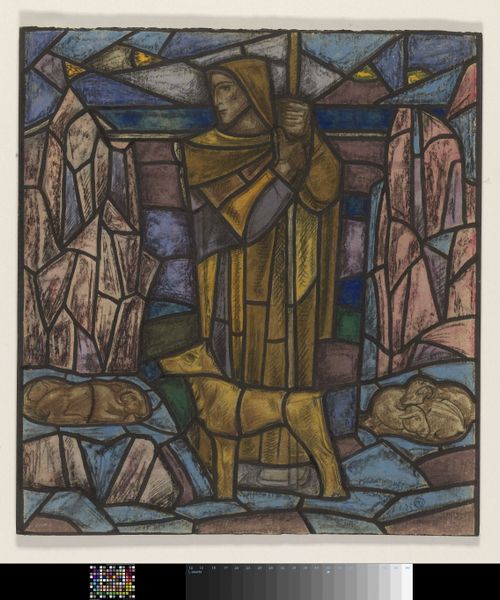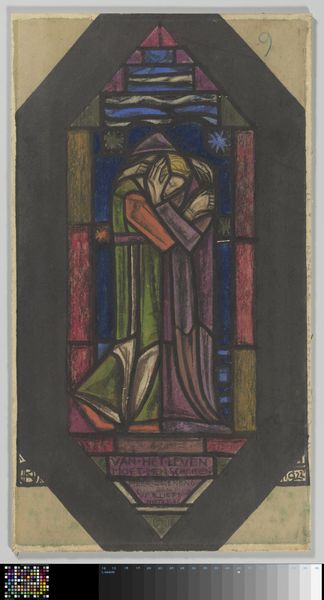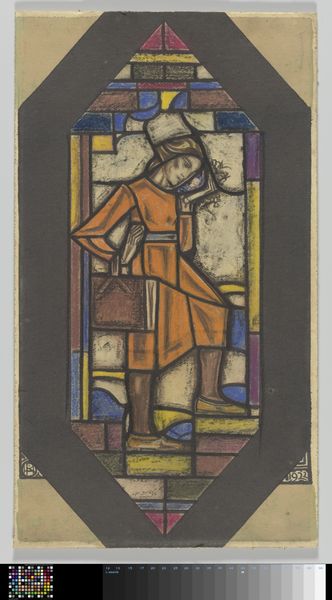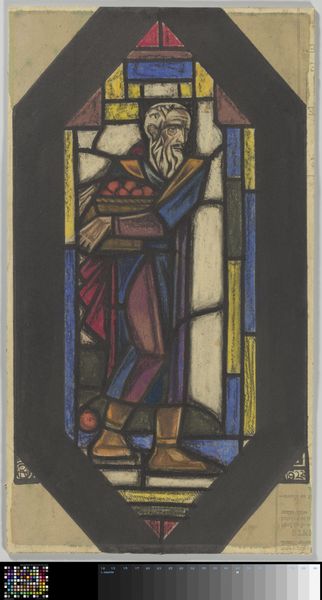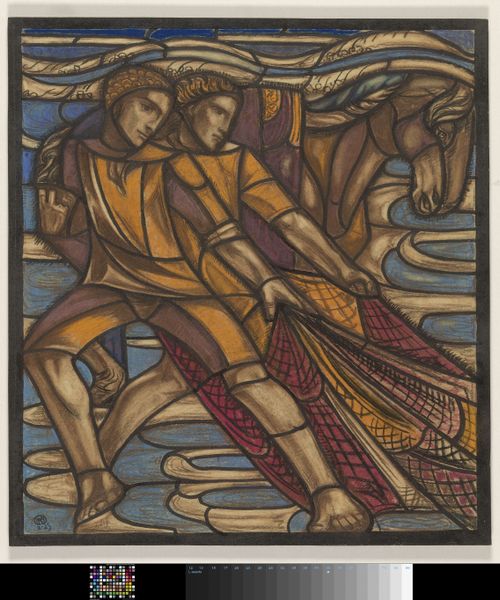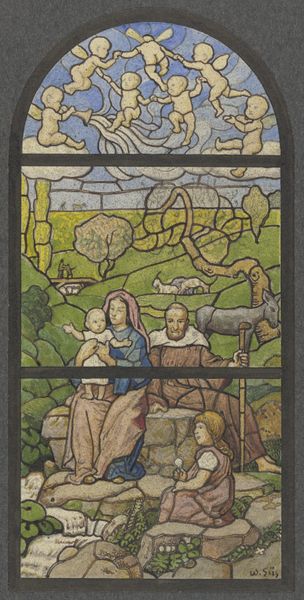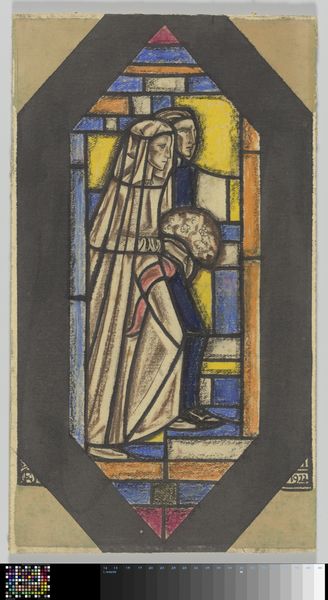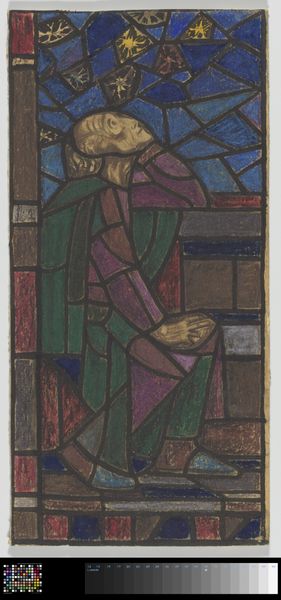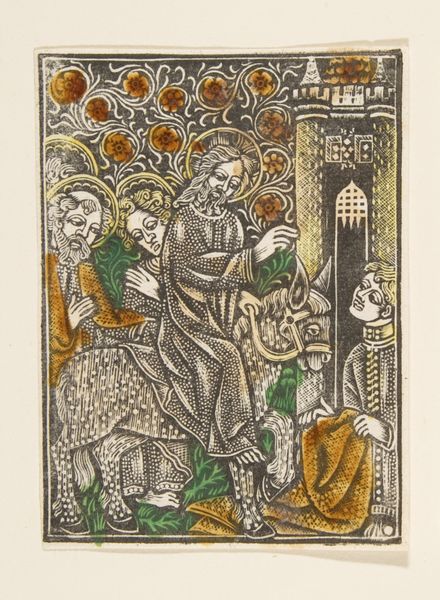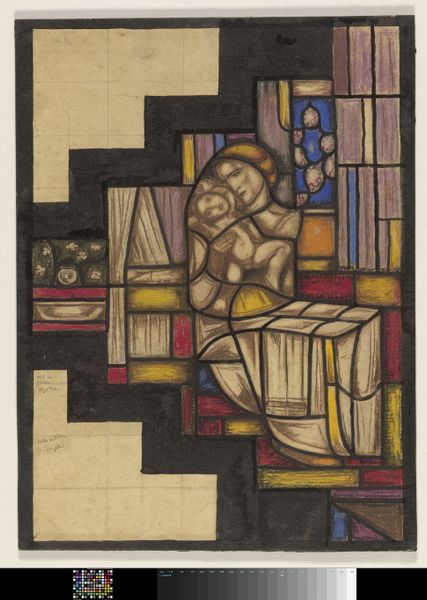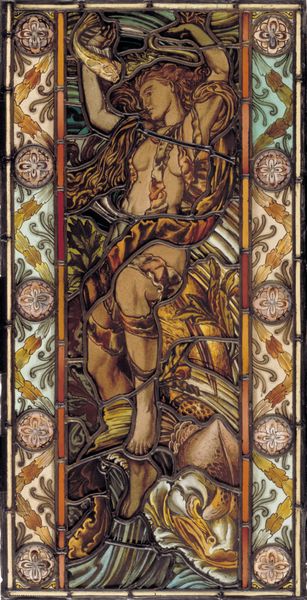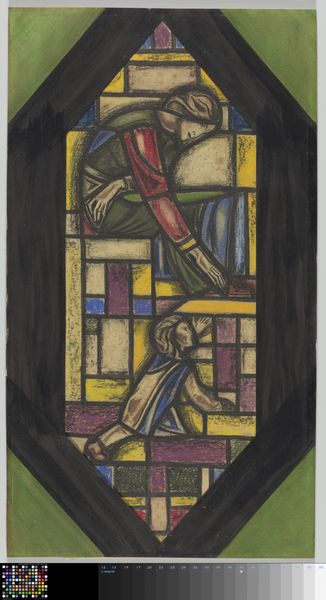
Ontwerp voor raam in het Nederlands Paviljoen op de tentoonstelling Arts Décoratifs te Parijs, 1925 1925
0:00
0:00
Dimensions: height 590 mm, width 540 mm, height 547 mm, width 490 mm
Copyright: Rijks Museum: Open Domain
Curator: We’re looking at "Ontwerp voor raam in het Nederlands Paviljoen op de tentoonstelling Arts Décoratifs te Parijs, 1925" a design for a window in the Dutch Pavilion at the Paris Decorative Arts Exhibition, created in 1925 by Richard Nicolaüs Roland Holst. It employs tempera and drawing techniques. Editor: My first impression is its contemplative mood; the figures almost seem suspended in a moment of profound stillness. The composition with geometric patterns enclosing the figures, it feels both intimate and distant. Curator: Yes, Holst's choices in the division of space—each form is deliberately outlined—establish a visual language emphasizing the artificial construction, typical of Art Nouveau but verging into something…stricter. The figures themselves become architectural elements within the broader design. Editor: From a historical perspective, the 1925 Paris Exhibition was crucial for solidifying Art Deco’s aesthetic reach globally. Given this was for the Dutch Pavilion, how might we consider its contribution within the narrative of Dutch identity on the world stage during the Interwar period? What kind of cultural dialogue was Holst participating in? Curator: The interplay between figuration and geometric abstraction is significant. We see figures embraced inside the stained window in the foreground and in the background, a mountainous scenery, a starry sky with the moon and sunlight. Semiotically, we may look at these forms beyond their referential meanings; Holst's manipulation of colour and form achieves a flattened, almost medieval sense of space. It transcends merely illustrating figures; instead, we receive constructed visual poetry. Editor: Right, the stylized treatment hints at the ongoing tensions between tradition and modernity that characterized Dutch design during the period. Presenting his work at the Decorative Arts Exhibition signals a conscious engagement with wider European artistic trends. And stained-glass window, generally ecclesiastical or bourgeois, is the stage for presenting national identity on display, for both domestic and foreign spectators. Curator: Looking closely, notice the almost total absence of shading—it emphasizes surface texture above depth. The chromatic selection favors blues and earth tones, constructing not so much realism as a harmonious, symbolic organization. Editor: This piece offers valuable insights into the negotiations of national representation in international contexts. Understanding Holst's project in relation to prevailing cultural dialogues of his time enables a richer interpretive experience. Curator: Agreed, a work rich in layered aesthetics, that demands a multi-angled interpretation.
Comments
No comments
Be the first to comment and join the conversation on the ultimate creative platform.
